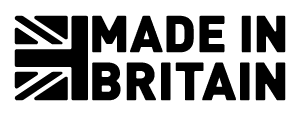
Much has been said about the loss of learning due to various lockdown guises over the past year and a bit, however carefully planned EYFS activities can minimise the impact of these lost opportunities. No one is saying that it’s going to be easy to claw back everything that has been missed. A great place to start is by ensuring that children are engaged and have an environment in which there is an endless amount of learning, in whatever format. Here are a few ideas:
Speech and Language
Children in EYFS settings are still developing their speech and language. They need regular support and opportunities to allow them to freely experiment with words, phrases and sentences. Most importantly of all, the EYFS activities you provide and encourage ought to be irresistible to them.
- Tennis Talk
A simple activity that requires little in the way of preparation. Tennis Talk is a paired game for an adult and child. Grab your imaginary tennis rackets, choose a topic (you could do this by pulling a random card out of a box – have lots with different pictures on, such as the circus, fairground, beach etc., but be mindful that not all children will have had the same experiences), and then you are ready to begin. Throw your imaginary tennis ball into the air and serve it to the child, saying a word related to the topic you picked, e.g. sandcastle. The child should then hit the ‘ball’ back to you along with another word linked to the topic. It’s a great way to interact and get the children to think on their feet. For added challenge, you could always come up with adjectives to describe the noun given, e.g., giant sandcastle.
- Show and Tell
Show and Tell may seem like a controversial suggestion as it has fallen out of favour in so many preschools, nurseries and schools due to its repetitiveness and monotony. However, this does not mean that you have to ban it. Simply adapt it to meet the needs of your children. If you have noticed that many of them are unable to ask questions, this could be the ideal opportunity to develop those skills. Model, model and model again. They will soon be question experts beyond the typical Why? which is common for youngsters in EYFS settings.
Mathematics
Children in EYFS settings are still very much learning about numbers, sizes, shapes and patterns, and how these apply to everyday life. Engaging them in meaningful EYFS activities where they can develop their knowledge, skills and understanding is vital.
- Buried Treasure
Grab your pirate hats and run to the sandpit, where the shipmates’ job is to unearth the treasure. In advance, hide numbers (these could be laminated, but plastic tactile ones are preferable – much more fun to find!) within the sand. Provide a clipboard with a laminated list with numbers 1-5 or 1-10 on (this is a great way to differentiate according to the needs of the individuals) and a dry wipe pen. Ring a bell (always fun) to start the treasure hunt, and when children find one, they should bring it back, tick the corresponding number off their list and say what the numeral is. To add further challenge, you could also get them to form the number using their finger, either in the air or in a separate tray of sand.
- Role Play
Having a role-play area where there are numerous opportunities for learning, including mathematics, is essential for early years settings. Rather than thrusting your own ideas upon them, you may wish to chat to your cohort and find out their interests and go with those. For example, if you have a car-mad group of children, create a garage in the outdoor area with numbered bays, registration plates, order pads, telephone, car wash equipment and a till. Yes, it will be messy, but who cares when there’s learning going on?
- Daily Vote
The Daily Vote activity spans several areas, but mathematics is perhaps the main one. It’s never too early for children to learn about democracy and fairness, and this does just that. You could use this to get the children to vote for the snack they’d like, the story they most want to hear or the equipment they’d like to see in the tuff tray (endless possibilities!). Explain the two (or three, if you’re feeling brave!) options to the children and then provide them with a cube or counter to enable them to cast their vote. The old IKEA Tolsby frames were great for this as you can slide the options into them to display. If it’s books, just have them standing up on a little table. In front of each option, have a ‘voting box’, and children should post their counter or cube inside. The boxes should be sealed to avoid anyone seeing. Count the number of votes from each box and discuss which was the most popular choice. There will be moans, but eventually, children will realise that it’s democracy in action.
Physical Development
With most clubs ceasing for several months at a time, the impact on children’s physical development and health is worrying. Encouraging lots of physical activity will help to combat the adverse effects.
- Fairy Tale Fun
Grab some pictures of key characters from fairy tales, such as the giant from Jack and the Beanstalk, the wolf from Little Red Riding Hood, or Ariel from the Little Mermaid. Children should spread themselves out and run around the space. Pick a card, blow the whistle and show children the character. If it’s the giant, they should move like him. If you picked the wolf, how could they move like him? What would that look like? Yes, you’ll have howls and growls, but it is such a fun game that they’ll be begging to play it again.
- Parachute Games
An oldy but a goody. Use of a parachute to play games will be a motivational activity for many, and it doesn’t need to stop at physical activity. You can also incorporate numbers, words, colours. There are so many games to choose from, but fruit salad is perhaps a favourite. Give each child a fruit (only have three or four in total), like apple, banana, pear, apple, banana, pear… Waft up the parachute and then shout one of the fruits. Apples should run underneath and swap places with another apple before it falls back down again. Doing this with numbers, improves their focus by showing the numeral rather than saying it as that relies on number recognition rather than just good listening skills.
Author: Helen Neale
Helen Neale is the owner and editor for kiddycharts.com; a social enterprise dedicated to providing resources to schools, and families to help educate and entertain. She is qualifying as a counsellor, and is already a qualified digital marketer; spending slightly too much time on social media. She has two children of her own, and is obsessed by dragons.











